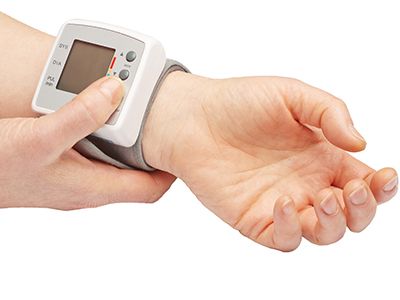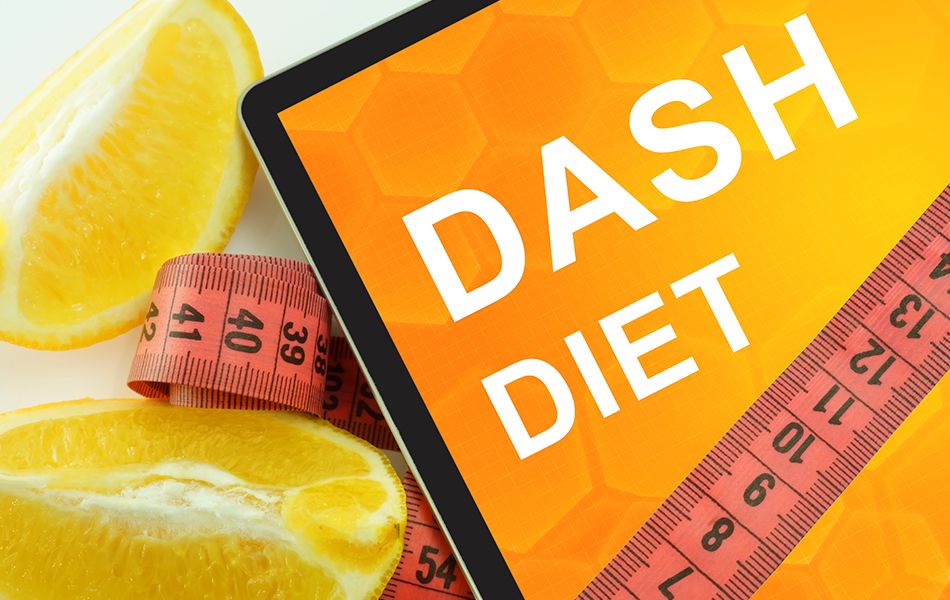So, you’re concerned that you’ve got high blood pressure. You make an appointment then head off to the doctor to get it checked. But, as you’re waiting, the clinical atmosphere starts to make you nervous. Then when the guy in the white coat actually straps the monitor onto your arm, you’ve gotten yourself into such a state that your pulse is beating way faster than normal. It’s hardly surprising that the doctor’s going to tell you that you’ve got high blood pressure.
This scenario is quite common. In fact, it’s so common that it’s been given a name – White Coat Hypertension; the phenomenon when your blood pressure readings as taken by a doctor are higher than those taken at home. The White Coat part refers to the intimidating lab coats that many doctors wear.
Research reveals that most people will have a blood pressure reading in a doctor’s surgery that is about 10mmHg higher on the systolic (top) reading and 5mmHg higher on the diastolic (bottom) reading. For some people, though, this difference be even greater.
People who have blood pressure readings that are in excess of 140/90mmHg only when they are being monitored by a doctor are classified as having white coat hypertension. When they take their readings at home, they are normal.
What Is The Cause Of The White Coat Effect?
Contents
- 1 What Is The Cause Of The White Coat Effect?
- 2 Do You Have White Coat Hypertension?
- 3 How To Deal With White Coat Hypertension
- 4 Types Of Blood Pressure Monitors
- 5 The DASH Diet For High Blood Pressure
- 6 What To Eat On The DASH Diet
- 6.1 Cereal products 6-8 servings per day:
- 6.2 Vegetables and fruits 4-5 servings a day
- 6.3 Dairy: 2-3 portions per day
- 6.4 Meat, fish or poultry: 6 portions per week or less
- 6.5 Nuts, seeds and beans: 4-5 portions per week
- 6.6 Fats, vegetable oil and eggs: 2-3 portions per day
- 6.7 Sweets: 5 times per week or less

Our blood pressure is not a static number. It rises and falls according to what we are doing, just like our pulse rate. When we are nervous, it will go up. The very act of having your blood pressure read by a doctor can be enough to cause the anxiety that may cause your reading to rise. It is quite common for most people to feel more tense in a medical setting than they do at home. This level of nervousness may not even be physically noticeable, but it will be enough to increase a person’s blood pressure.
For people who get extremely nervous at their doctor’s visit, their systolic blood pressure can be elevated by as much as 30mmHg.
White Coat Hypertension can make it very tricky for doctors to get an accurate recording of what a person’s normal blood pressure is.
Do You Have White Coat Hypertension?

The White Coat phenomenon may incline people to believe that they don’t really have high blood pressure when they get a high reading from their doctor. They might conclude that their reading is only high because they were nervous when the doctor took it. As a result, they might not follow through on any advice that they are given regarding changing their lifestyle in order to bring the blood pressure down.
This could, obviously, be a grave error that would only worsen the person’s condition. The only way to really know if you have white coat hypertension is to take readings at home and compare them with those you receive from the doctor.
It is a very good idea to take regular readings of your blood pressure at home. Keep a record of your readings that you can take it with you to the doctor. Then he can compare them to the readings that he takes.
Another alternative is to undergo 24-hour blood pressure monitoring. Your doctor will give you a discreet digital blood pressure monitor which you wear. This will take readings at regular intervals over a 24-hour period. The monitor will automatically store your readings and your doctor will be able to access them. From these readings he will then be able to work out your average blood pressure reading.
How To Deal With White Coat Hypertension

The key to controlling white coat hypertension is to manage your anxiety. Try getting to the appointment well ahead of time so that you are not rushing.
There is research that blood pressure monitoring at home can help people with hypertension to control their blood pressure. A 2010 analysis from the Independent Cochrane Collaboration showed that home monitoring resulted in a lowering of both systolic and diastolic blood pressure readings.
Taking your blood pressure at home can be very handy for people who are just beginning to take blood pressure lowering medication. It can help them to assess how effective their dosage is and how well the medication is working. It is also good for pregnant women who are experiencing pregnancy-induced hypertension.
Masked Hypertension
There is a mirror effect to white coat hypertension which is called masked hypertension. This is when people have normal readings at the doctor’s office but elevated readings when they take them at home. The reason as to why this occurs is perplexing to researchers as you would think that a person would be more relaxed when taking their blood pressure at home.
Home Blood Pressure Testing

The best type of device to measure your blood pressure at home is an arm band monitor rather than a finger or wrist cuff device. The most reliable reading will come from the brachial artery in your upper arm. This is far better than the artery in your wrist.
When shopping for a blood pressure monitor keep these points in mind . . .
- Check if the monitor is covered by your health insurance provider. This may require that you get a letter of recommendation from your doctor.
- Check with your doctor what brand he / she recommends.
- Consider purchasing a machine that also measures your pulse.
- Consult your doctor for advice about how frequently you should measure your blood pressure, which arm to measure it on and how often he would like to see your readings.
- Be sure that the monitor is large enough to fit around at least 80 percent of your upper arm. Ideally you should purchase a unit that has adjustable cuffs. Using a unit that has the wrong size cuff for you will give inaccurate readings.
- Make sure that the display provides large bright easy to read digits.
- Find a brand that permits multiple readings to be stored on the device at the same time. That way more than one person can use it.
- Look for a unit that has both battery and plug on power.
- Consider the cost – you should expect to pay between $40 and $100 dollars. Obviously, the more you pay, the better quality you will get. However, there is no reason you should have to pay more than a hundred dollars for a top quality blood pressure monitor.
Getting The Most Accurate Reading

The obvious disadvantage of using a home-based blood pressure monitor is that you are not a medical professional and it is unlikely that anyone who you ask to help you with taking your readings will be either. For that reason, it is a good idea to take your new monitor in with you to your doctor so that he or she can model how to use it properly. Your doctor will also be able to check to see if the monitor gives similar readings to the one that he or she uses.
According to advice provided by the American Heart Association (AHA), you should take you blood pressure monitor in to be checked against your doctor’s device at least once per year. In addition, the AHA provides the following tips to make sure that you are using your blood pressure monitor correctly . . .
- Do not drink anything with caffeine in it, smoke or do any exercise within half an hour of taking your blood pressure reading.
- Go to the bathroom before taking your reading
- Spend at least five minutes sitting in a relaxed position before taking your reading
- Always wrap the arm cuff around your bare arm
- Make sure that you are sitting on a solid chair with a good back support. A couch is not a good place to take your reading.
- Rest your arm on a flat surface so that the cuff is at the same level as your heart.
- Be sure to take your blood pressure readings at the same time every day
- Take multiple readings, spaced a minute apart. Make a record of your readings so that you can share them with your doctor.
- Look for such specific features such as irregular-heartbeat detector, risk-category indicator, multiple user memories, multiple cuffs, memory download capability, large-digit display, and data averaging function.
Types Of Blood Pressure Monitors
Arm Monitors
Arm monitors inflate the cuff and then display readings on a monitor. The more expensive models will allow you to download your results to your computer. This will allow you to easily share your results with your doctor. Some arm monitors will provide for multiple user storings. The majority of tests have shown arm band monitors to be the most accurate. However, it is very important that you get the right arm fit. If it is too tight or loose this will affect the accuracy of the reading.

Wrist Monitors
Wrist based blood pressure monitors are far more compact and lower priced than arm-based monitors. However, they not as accurate. The wrist area is very sensitive to changes in body positioning.
To get the best wrist-based blood pressure reading make sure that you keep your wrist at the level for your heart as you take the reading.

The DASH Diet For High Blood Pressure

You may have heard of the DASH Diet. It is a diet that was specifically designed for people with hypertension. DASH stands for Dietary Approaches to Stop Hypertension. It is the creation of the National Institutes of Health.
The DASH diet revolves around eating plenty of fruits, vegetables, low-fat dairy products, whole grains, poultry, fish and nuts. You can eat simple carbohydrates in very limited quantities. The emphasis is on increasing consumption of protein and fiber while limiting saturated fats and cholesterol. There is also a focus on whole grains, which should comprise some 50 percent of your daily food intake. The second most important food is vegetables.
The DASH diet also aims to limit your intake to 2,300 milligrams of sodium. This has been shown to help lower blood pressure. You should also go withy foods that high in magnesium, calcium and potassium content, all of which have been shown to be beneficial in powering blood pressure.
What To Eat On The DASH Diet

Cereal products 6-8 servings per day:
This includes bread, porridge, cereals, rice and pasta. It is an excellent source of energy and fiber. To enrich your diet with fiber and trace elements such as magnesium, go for whole grain products rather than refined flour. You should also choose brown rice instead of white pasta, whole-meal instead of refined and whole grain bread instead of white. Choose products derived from cereals or 100% wheat. Cereals contain a very small amount of fat, so do not spoil them by adding a large amount of butter, cream or cheese sauces.
Vegetables and fruits 4-5 servings a day
Tomatoes, carrots, broccoli and other vegetables are just crammed with dietary fiber, vitamins and minerals such as potassium and magnesium. Both fresh and frozen vegetables are equally beneficial. In order to gain maximum benefit from canned vegetables, make sure that no salt is added.
To increase the amount of vegetables in your daily diet, be creative. For example, when cooking beef stew, add half the amount of chopped vegetables. Like vegetables, fruits contain a large amount of fiber, potassium and magnesium, and there is almost always a minimum amount of fat, exceptions are coconut and avocado.
To start your day with fruit, add a glass of orange juice for breakfast, or have a snack with a slice of apple or orange during the day. Do not neglect such dessert as fruit salad with low-fat yogurt as a filling.
Use edible peeled fruit whenever possible. Peeled apples, peaches, and most fruits with pits add a certain zest to dishes and enriches them with additional fiber and micronutrients.
Dairy: 2-3 portions per day
Milk, yogurt, cheese and other dairy products are the major source of calcium, vitamin D and protein. However, choose low-fat or fully fat-free products, as milk products are high-fat and contribute to the development of atherosclerosis.
If you have trouble digesting dairy products, that doesn’t mean that you should completely eliminate them from your diet. There are dairy products containing the enzyme lactase in shops, which are able to significantly reduce or prevent symptoms of lactase deficiency. You can also choose lactose-free dairy products.
Low-fat frozen yogurt can serve as a substitute for sweets. Fruits can be added taste and flavor.
Meat, fish or poultry: 6 portions per week or less

This food is an excellent source of protein, vitamin B, iron and zinc. However, even lean meat contains a considerable amount of fat and cholesterol, try to limit the use of animal meats.
Divide your usual portion of meat food into 3 or 2 pieces and eat it with vegetables.
Before cooking meat dishes, always remove the skin and fat, then boil, simmer or fry the meat on the grill instead of frying in a pan with butter.
Nuts, seeds and beans: 4-5 portions per week
Almonds, sunflower seeds, lentils, peas, beans are all good sources of magnesium, potassium and protein. They also contain a lot of fiber and phyto-elements that can prevent some tumors and heart diseases.
Nuts contain a high proportion of fat, but it is made up of healthy monounsaturated fatty acids. Nuts are very high in calories, so they should be consumed moderately.
Products based on soy protein – such as tofu or soy meat – are a good alternative to animal meat because they contain all essential amino acids. Soy products also contain isoflavones – natural herbal ingredients the positive effect of which has long been proved by scientists.
Fats, vegetable oil and eggs: 2-3 portions per day
Fats are an essential substance required for the absorption of essential vitamins, as they are involved in the formation of the immune system. However, an excessive amount of fat increases the risk of cardiovascular disease, diabetes and obesity. The DASH diet allows keeping a healthy balance, providing about 27% of daily caloric intake from fats.
Start being a smart consumer – get used to reading the information on the labels of products, choose those sauces, mayonnaise and margarines that contain none or a minimal amount of saturated fats and trans-fatty acids.
Sweets: 5 times per week or less
Even on the DASH diet you can afford to use small amounts of sweets. Sweets, which are allowed in the DASH diet, should not contain fat, such as sherbet or sorbet, fruit ice-cream, jelly or marmalade.
Artificial sweeteners such as aspartame or sucralose can satisfy your cravings for sweets, but limit their use.




